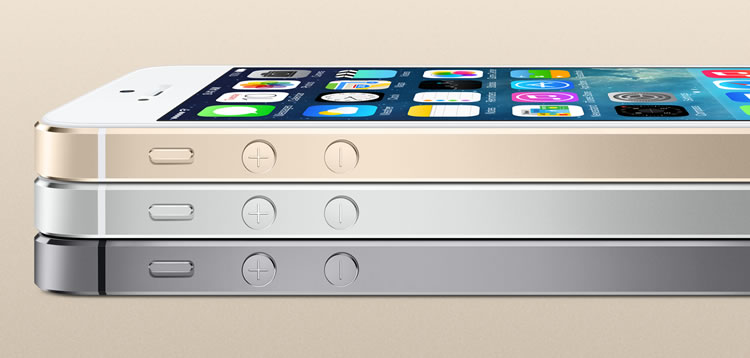Usability Impressions and Conclusion
One area that often gets overlooked in a smartphone review is how the device handles calls. With the 5s, I had no problems making or receiving calls nor were there any issues with sound quality over AT&T's network. Furthermore, the loudspeaker sounded really nice when listening to music via Rhapsody or iTunes Radio. It's about on par with your typical notebook speaker albeit not quite as loud. There was zero distortion at maximum volume which is always a plus.
The included EarPods are an excellent choice if you need a set of headphones. These are the same earbuds that Apple introduced with last year's model. I typically don't like in-ear earbuds and never had much luck with the iPod-era ones but these sound really nice and fit comfortably. They aren't a one-size-fits-all solution but they are more than adequate for most users.
Having factored in everything here today, it's clear that the iPhone 5s is Apple's new flagship and best iPhone to date. Touch ID is an extremely convenient addition, and after using it, you'll wonder why you ever had to tap a passcode every time you wanted to use your phone before. I also really enjoyed the slow motion video feature and the general improvements to the camera, though overall, I don't believe the 5s is that much better than the 5.
The 64-bit processor is a first for a smartphone and while it proved to be about twice as fast in benchmarks as last year's model, it doesn't translate into any tangible improvements to the user at this moment.
One topic that's been covered a lot in the news lately is the 5s' motion sensor. True enough, when comparing motion-based apps like the compass against the 5, there was a huge difference. On average, the two seemed to be off by about 6-7 degrees. Furthermore, the leveling section was off by about three degrees when laid on a known flat surface.
So what does this mean for users? Well for starters, games that take advantage of these internal sensors are likely to be off. But the bigger elephant in the room is how to fix it, or if it can be fixed at all. If it's just a software bug, it's not a huge deal. In the event it's a hardware calibration issue, then we're looking at something potentially more troubling for current and future owners of the 5s.
So is the iPhone 5s the best phone on the market? It'd be a stretch to say yes, but I can say it's the best phone on the market under 4.5 inches. Is it worth purchasing if you already own the iPhone 5? No, not really. While there are a few compelling features, the phone doesn't offer a noticeable speed increase and considering it looks virtually identical to last year's model, you aren't getting anything new in terms of aesthetics either. You'd be well-advised to save your money and wait until the iPhone 6 shows up in a year's time.
At the end of the day, the iPhone 5s is an excellent phone, but whether it's the right choice for you will depend on what you are looking for in a device. If a smallish screen and an ecosystem that's still locked down substantially compared to Android isn't a problem, the 5s is a great choice. If you desire a phone that pushes the bounds of tablet territory like a Galaxy Note 3 and you want more freedom over the OS, keep looking.
Pros: Built upon iPhone 5's solid hardware foundation, the 5s adds next-gen processing chops and a totally usable fingerprint reader. iOS 7 brings Apple up to par with Android, and you get access to what's arguably still the better ecosystem.
Cons: Not enough to warrant an upgrade for current iPhone 5 users. Android flagships are just as good as the iPhone these days.


